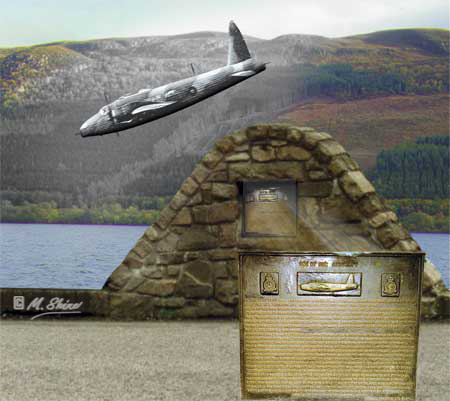The Wellington Bomber

Return to Fieldwork Groundtruth The World War II Wellington bomber N2980, squadron letter R for Robert, had completed fourteen missions when she was transferred to training duties at No. 20 O.T.U. at Lossiemouth. On New Year's Eve 1940, pilots Sqdr.L. Marlwood- Elton and P/O Slatter took off in the late afternoon with a crew of 6 trainee navigators.While flying along the Great Glen at a height of 8000ft. they encountered a snowstorm and the starboard engine cut out. Losing height, Marlwood -Elton ordered the trainees to bale out. At this point, the rear gunner, Sgt. Fensome was killed when his parachute failed to open but the others landed safely. In the dusk, the two remaining men fought the aircraft down through the snow clouds to ditch in the northern basin of Loch Ness near the A82 road. They climbed onto the wing, launched their inflatable dinghy and paddled ashore where a lorry driver gave them a lift into Inverness in time to join the New Year celebrations. Marlwood -Elton thought he would never see R for Robert again. This page copyright Shine, LNP Return to Fieldwork Groundtruth |
|
